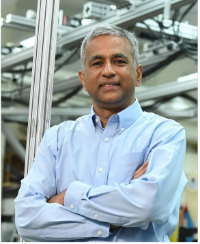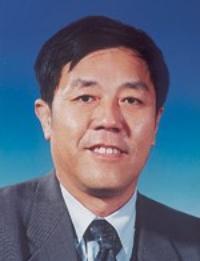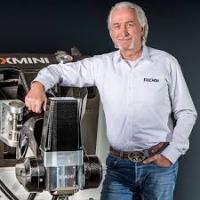The information of keynote speakers is as follows. (in alphabetical order of their surnames)
|
Prof. Sunil K. Agrawal Columbia University, USA
|
BiographySunil K. Agrawal received a Ph.D. degree in Mechanical Engineering from Stanford University in 1990. He is currently a Professor and Director of Robotics and Rehabilitation (ROAR) Laboratory at Columbia University, located both in engineering and medical campuses of Columbia University. Dr. Agrawal has published more than 500 journal and conference papers, three books, and 15 U.S. patents. He is a Fellow of the ASME and AIMBE. His honors include a NSF Presidential Faculty Fellowship from the White House in 1994, a Bessel Prize from Germany in 2003, and a Humboldt US Senior Scientist Award in 2007. He is a recipient of 2016 Machine Design Award from ASME for “seminal contributions to design of robotic exoskeletons for gait training of stroke patients” and 2016 Mechanisms and Robotics Award from the ASME for “cumulative contributions and being an international leading figure in mechanical design and robotics”. He is a recipient of several Best Paper awards in ASME and IEEE sponsored robotics conferences. He has also held international visiting positions that include Technical University of Stuttgart, Hanyang University in Korea, University of Ulster in Northern Ireland, Biorobotics Institute of SSSA in Pisa, Peking University in China. He has successfully directed 30 PhD student theses and currently supervises the research of 10 PhD students at ROAR laboratory. He is the founding Editor-in-Chief of the journal “Wearable Technologies” from Cambridge University Press. He is the Conference Chair for IEEE BioRob2020 to be hosted in New York city. Topic - Parallel and Cable Robots to Restore and Retrain Human MovementsNeural disorders and old age limit the ability of humans to perform activities of daily living. Robotics can be used to probe the human neuromuscular system and create new pathways to characterize, relearn, and restore functional movements. Dr. Agrawal’s group at Columbia University Robotics and Rehabilitation (ROAR) Laboratory has designed innovative parallel robots for this purpose. These parallel and cable-driven robots have been tested in a variety of studies to understand the human neuro-muscular response. Human experiments have targeted patients with stroke, cerebral palsy, Parkinson’s disease, ALS, Vestibular disorders, elderly subjects and others. The talk will provide an overview of some of these robots and scientific studies performed with them. |
||
|
Prof. Dragos Axinte The University of Nottingham, UK
|
BiographyDragos Axinte is Professor and Chair of Manufacturing Engineering and Director of the Rolls-Royce UTC in Manufacturing and On-Wing Technology at University of Nottingham. Dragos is an active researcher in the areas of machining technologies and machine tools from where he developed an interest in developing robotic systems for in-situ repair of large and crammed industrial systems. After the completion of his PhD and ten years in R&D in industry, Dragos was recipient of two NATO Advanced Research Fellowships in Italy and Denmark. He then, moved to the University of Birmingham to carry out research in high speed machining. Since 2001 he has been working at the University of Nottingham in the field of advanced machining operations and specialist robotic systems. Professor Axinte has currently in his research portfolio projects supported by various funding agencies (Horizon 2020, EPSRC, Innovate UK, ATI, industry). He has over 160 journal publications, 22 patents and he was the recipient of Rolls-Royce Innovation Award (2011) and Best Patent Award (2012). Dragos is the Editor-in-Chief of the International Journal of Machine Tools and Manufacture, and Fellow of the International Academy of Production Engineering (FCIRP). Topic - “Portable factories” for repair and maintenance of high-value assets: Another way to conceptualise parallel kinematic robotic systemsDespite of its strategic importance, the area of robotics for in-situ repair of large/intricate/complex geometry industrial equipment has been, somehow, not obtained full attention from researchers. However, due to the special operating and workspace conditions, off-the-shelf robots miss the dexterity and/or the necessary flexibility to perform such in-situ repair tasks. To address these challenges, Prof. Axinte’s group at University of Nottingham has developed a series of innovative designs of walking hexapod machine tools that could work both independently or coupled with other robotic systems to perform complex tasks in-situ industrial environments where human access and/or conventional robots cannot reach easily. Our robotised machine tool systems are capable to walk within hazardous and perform processing tasks (e.g. machining, inspection). The presentation will allow an inside into the design concepts (e.g. mechanical structure, actuation, calibration) of both walking hexapod machine tools and their integration into hybrid platforms as well as the governing models and control strategies and further comment on the challenges related to the realisation of such a complex mechatronic system. Examples of the demonstrations of our robotic system will be presented in relation to targeted industrial applications related to high-value industrial systems. |
||
|
Prof. Clément Gosselin Laval University, Canada
|
BiographyClément Gosselin received the B. Eng. degree in Mechanical Engineering from the Université de Sherbrooke in 1985, and the Ph.D. degree from McGill University in 1988. He was then a post-doctoral fellow at INRIA in Sophia-Antipolis, France in 1988-89. In 1989 he joined the Department of Mechanical Engineering at Université Laval, Québec where he is a Full Professor since 1997. He is currently holding a Canada Research Chair in Robotics and Mechatronics since January 2001. He was a visiting researcher at the RWTH in Aachen, Germany in 1995, at the University of Victoria, Canada in 1996 and at the IRCCyN in Nantes, France in 1999. His research interests are kinematics, dynamics and control of robotic mechanical systems with a particular emphasis on the mechanics of grasping, the kinematics and dynamics of parallel manipulators and the development of human-friendly robots. His work in the aforementioned areas has been the subject of numerous publications in international journals and conferences as well as of several patents and two books. He has been directing many research initiatives, including collaborations with several Canadian and foreign high-technology companies and he has trained more than 100 graduate students. He is an Associate Editor of the IEEE Robotics and Automation Letters and of the ASME Journal of Mechanisms and Robotics. Dr. Gosselin received several awards including the ASME DED Mechanisms and Robotics Committee Award in 2008 and the ASME Machine Design Award in 2013. He was appointed Officer of the Order of Canada in 2010 for contributions to research in parallel mechanisms and underactuated systems. He is a fellow of the ASME, of the IEEE and of the Royal Society of Canada. Topic - Parallel and Hybrid mechanisms for intuitive physical human-robot interactionOver the past decades, parallel mechanisms have found applications in many areas including motion simulation, high-speed robots, machine-tools and cable-driven systems, to name a few. More recently, parallel and hybrid mechanisms have been proposed in the emerging field of physical human-robot interaction (pHRI) which aims at taking advantage of the complementary capabilities of robots and humans. One of the key challenges in pHRI is to provide an intuitive physical interaction to the human user. Due to their low moving inertia, parallel mechanisms can be used advantageously to design low-impedance mechanical interfaces in order to increase the mechanical bandwidth of the human-robot interaction, thereby leading to a very intuitive behaviour. In this presentation, the use of parallel and hybrid mechanisms in the design of pHRI devices is proposed and examples of prototypes developed at Laval University are shown. Solutions based on passive or actuated mechanisms are illustrated. The results clearly demonstrate the capability of parallel mechanisms to provide high interaction bandwidth for pHRI robots. |
||
|
Prof. Tian Huang Tianjin University, China |
BiographyTian Huang received his BE, ME and PhD from Tianjin University, China in 1981, 1984 and 1990 all in Mechanical Engineering. He was appointed in 1985 by the same University where he has been a full professor since 1992. He has been also appointed as formal part-time professor (0.25) with the University of Warwick (UK) since 2000. Dr. Huang’s research interests are kinematics, dynamics, metrology and control of industrial robots and machine tools. He published over 80 technical papers in the international journals, co-authored Chapter “Parallel Mechanisms” of Springer Handbook of Robotics (2nd Edition), and served as chairs or co-chairs of a couple of international conferences, the 11th IFToMM World Congress, Parallel 2014, Asian MMS 2014. Dr. Huang is a fellow of CIRP, a member of British Professor’s Council, the vice president (acting) of IFToMM (2016-2019), and a subject editor of Mechanism and Machine Theory. Topic - Some Issues on the Integrated Design of a 5-DOF Hybrid Robot Module for MachiningIn recent years, it has witnessed high demands for robotized cells for large parts manufacturing. A feasible and cost effective solution to implement such operations is to employ a full 5-DOF hybrid kinematic machine (or hybrid robot) which can be made as a plug-and-play robotized module mounted on a long reference track such that it can be rapidly and exactly located in the area where machining needs to be performed in situ. Driven by the motivation to develop new robotic structures comprehensive to the existing Tricept and Exechon, we propose a novel 5-DOF hybrid robot named TriMule. This presentation will address some important issues in the integrated design of such a robot with a goal to achieve good kinematic, rigidity and dynamic performance within a relatively large task workspace. Some potential applications will also be presented. |
||
|
Mr Kalle Neumann CEO of Exechon Enterprises LLC, UAE |
BiographyThe inventor of the Tricept & Exechon PKM, in 1985, after long years of study, hard work and research; and out of a Swedish home garage, the first Parallel Kinematics Machine (PKM) patent based on three actuators mounted around a stabilizing centre tube was developed by the young German inventor Karl-Erik Neumann and 30 years later the new XMini was born. Topic - PKM, the natural choice for Electrical Vehicles
|
||




